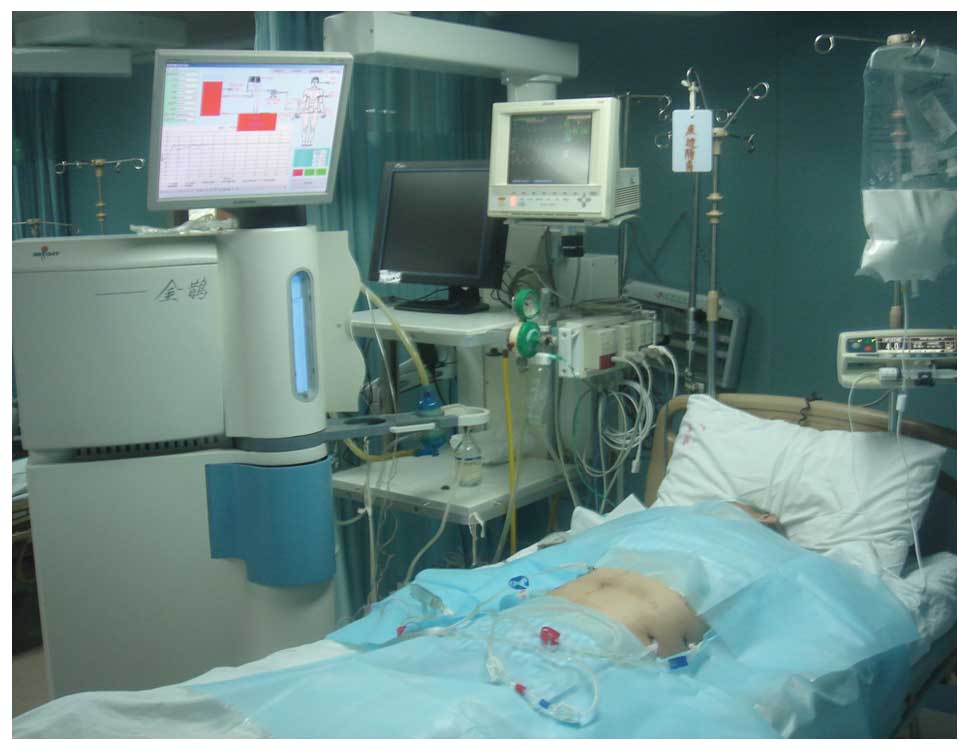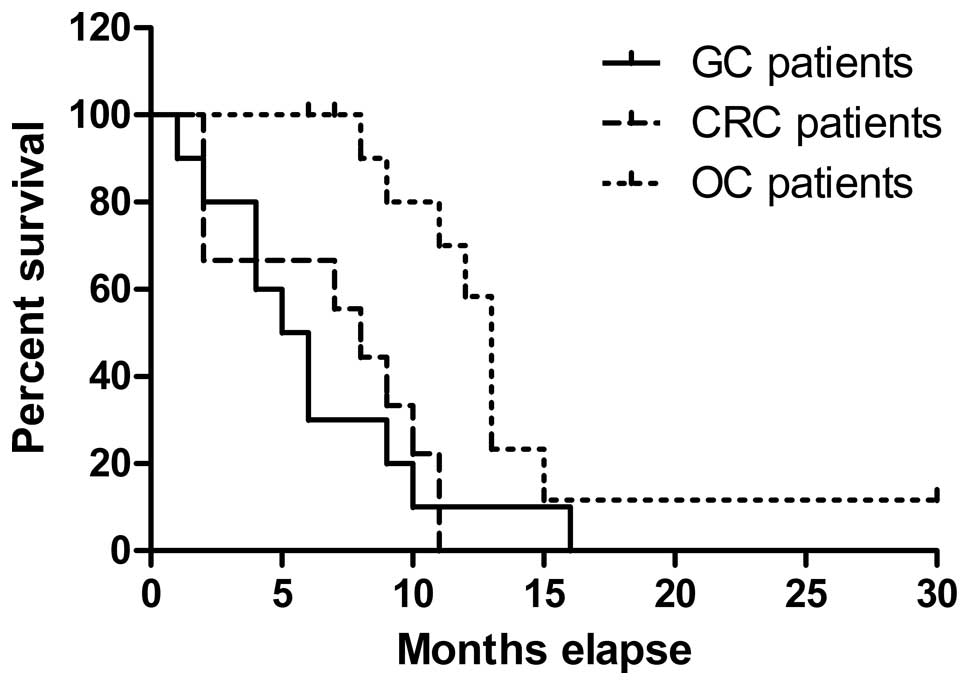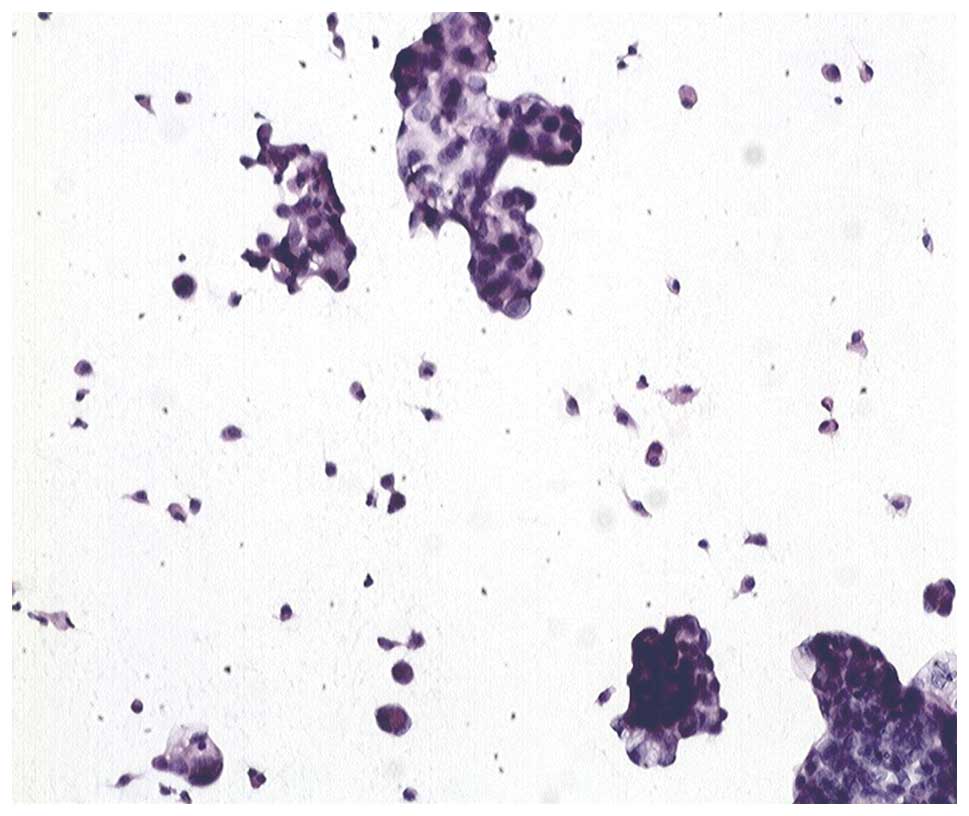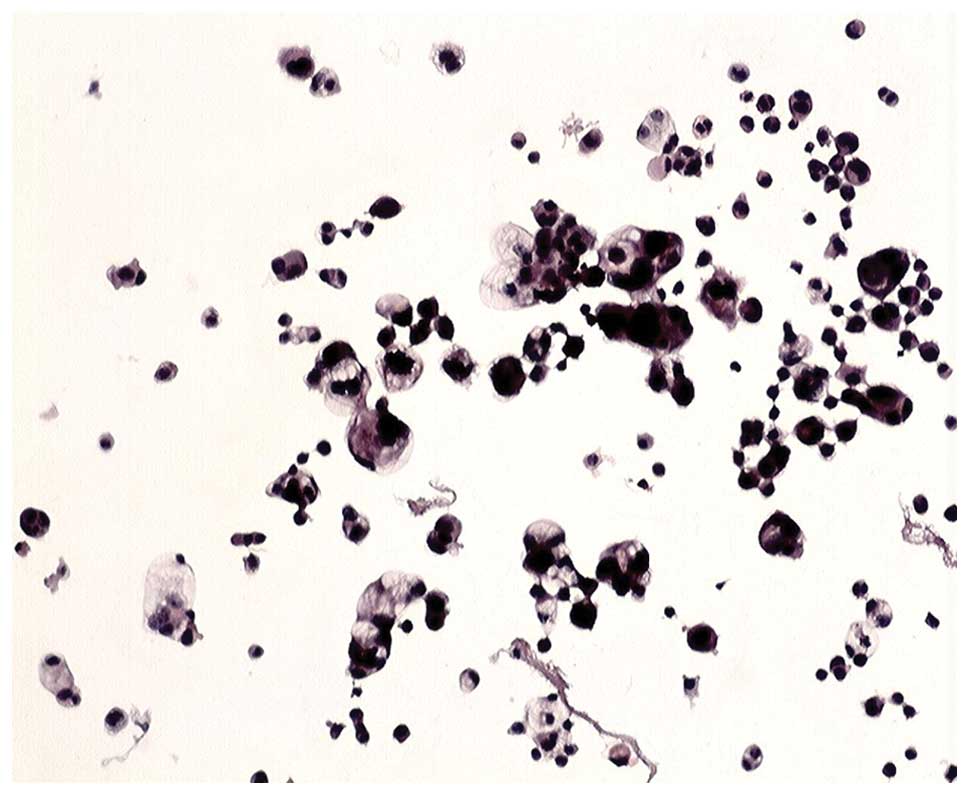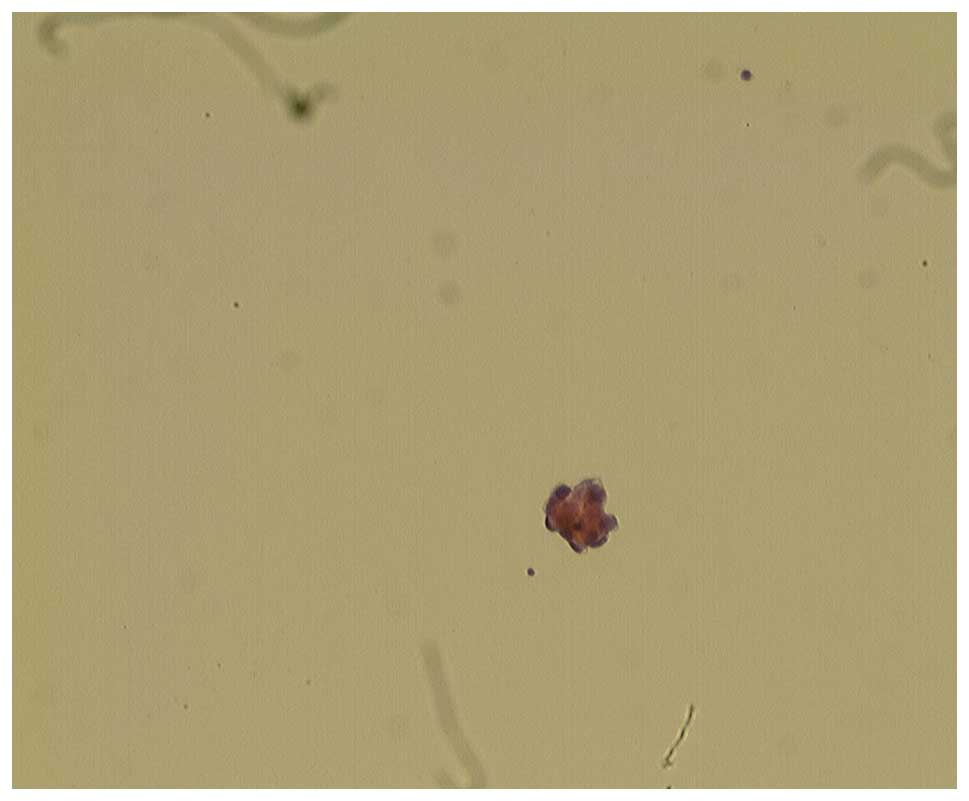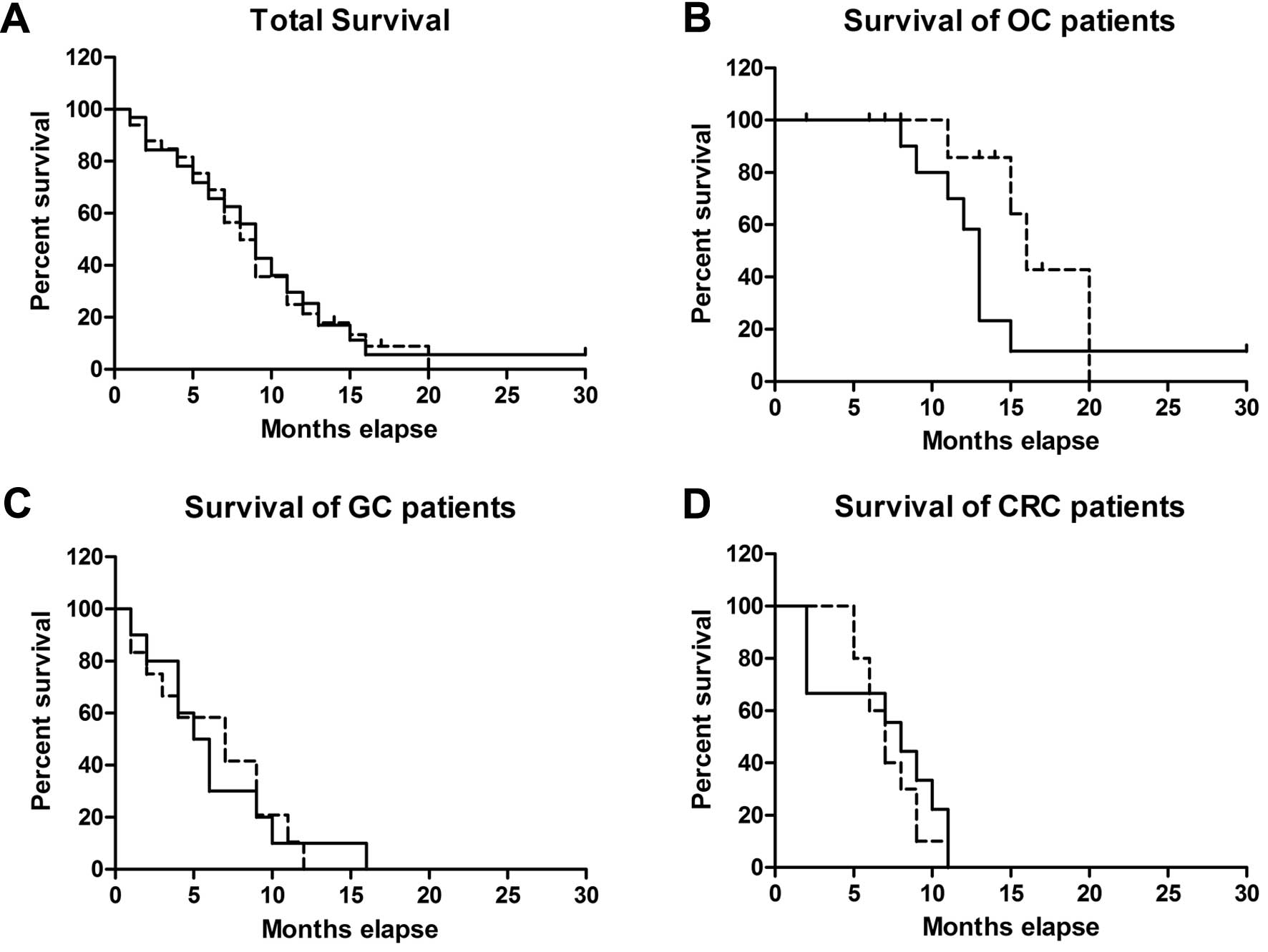|
1
|
Patriti A, Cavazzoni E, Graziosi L, et al:
Successful palliation of malignant ascites from peritoneal
mesothelioma by laparoscopic intraperitoneal hyperthermic
chemotherapy. Surg Laparosc Endosc Percutan Tech. 18:426–428. 2008.
View Article : Google Scholar
|
|
2
|
Becker G, Galandi D and Blum HE: Malignant
ascites: systematic review and guideline for treatment. Eur J
Cancer. 42:589–597. 2006. View Article : Google Scholar : PubMed/NCBI
|
|
3
|
Woopen H and Sehouli J: Current and future
options in the treatment of malignant ascites in ovarian cancer.
Anticancer Res. 29:3353–3359. 2009.PubMed/NCBI
|
|
4
|
Aarts F, Hendriks T, Boerman OC, Koppe MJ,
Oyen WJ and Bleichrodt RP: A comparison between radioimmunotherapy
and hyperthermic intraperitoneal chemotherapy for the treatment of
peritoneal carcinomatosis of colonic origin in rats. Ann Surg
Oncol. 14:3274–3282. 2007. View Article : Google Scholar
|
|
5
|
Kusamura S, Younan R, Baratti D, et al:
Cytoreductive surgery followed by intraperitoneal hyperthermic
perfusion: analysis of morbidity and mortality in 209 peritoneal
surface malignancies treated with closed abdomen technique. Cancer.
106:1144–1153. 2006. View Article : Google Scholar
|
|
6
|
Levine EA, Stewart JH IV, Russell GB,
Geisinger KR, Loggie BL and Shen P: Cytoreductive surgery and
intraperitoneal hyperthermic chemotherapy for peritoneal surface
malignancy: experience with 501 procedures. J Am Coll Surg.
204:943–953. 2007. View Article : Google Scholar
|
|
7
|
Spratt JS, Adcock RA, Muskovin M, Sherrill
W and McKeown J: Clinical delivery system for intraperitoneal
hyperthermic chemotherapy. Cancer Res. 40:256–260. 1980.PubMed/NCBI
|
|
8
|
Zanon C, Bortolini M, Chiappino I, et al:
Cytoreductive surgery combined with intraperitoneal
chemohyperthermia for the treatment of advanced colon cancer. World
J Surg. 30:2025–2032. 2006. View Article : Google Scholar : PubMed/NCBI
|
|
9
|
Al-Shammaa HA, Li Y and Yonemura Y:
Current status and future strategies of cytoreductive surgery plus
intraperitoneal hyperthermic chemotherapy for peritoneal
carcinomatosis. World J Gastroenterol. 14:1159–1166. 2008.
View Article : Google Scholar
|
|
10
|
Benoit L, Cheynel N, Ortega-Deballon P,
Giacomo GD, Chauffert B and Rat P: Closed hyperthermic
intraperitoneal chemotherapy with open abdomen: a novel technique
to reduce exposure of the surgical team to chemotherapy drugs. Ann
Surg Oncol. 15:542–546. 2008. View Article : Google Scholar
|
|
11
|
Huh JW, Kim YJ and Kim HR: Complete
peritonectomy and intraperitoneal chemotherapy for recurrent rectal
cancer with peritoneal metastasis. World J Gastroenterol.
15:756–757. 2009. View Article : Google Scholar : PubMed/NCBI
|
|
12
|
Spratt JS, Adcock RA, Sherrill W and
Travathen S: Hyperthermic peritoneal perfusion system in canines.
Cancer Res. 40:253–255. 1980.PubMed/NCBI
|
|
13
|
Ba MC, Cui SZ, Lin SQ, et al: Chemotherapy
with laparoscope-assisted continuous circulatory hyperthermic
intraperitoneal perfusion for malignant ascites. World J
Gastroenterol. 16:1901–1907. 2010. View Article : Google Scholar
|
|
14
|
Facchiano E, Scaringi S, Kianmanesh R, et
al: Laparoscopic hyperthermic intraperitoneal chemotherapy (HIPEC)
for the treatment of malignant ascites secondary to unresectable
peritoneal carcinomatosis from advanced gastric cancer. Eur J Surg
Oncol. 34:154–158. 2008. View Article : Google Scholar
|
|
15
|
Ferron G, Gesson-Paute A, Classe JM and
Querleu D: Feasibility of laparoscopic peritonectomy followed by
intra-peritoneal chemohyperthermia: an experimental study. Gynecol
Oncol. 99:358–361. 2005. View Article : Google Scholar : PubMed/NCBI
|
|
16
|
Garofalo A, Valle M, Garcia J and
Sugarbaker PH: Laparoscopic intraperitoneal hyperthermic
chemotherapy for palliation of debilitating malignant ascites. Eur
J Surg Oncol. 32:682–685. 2006. View Article : Google Scholar
|
|
17
|
Gesson-Paute A, Ferron G, Thomas F, de
Lara EC, Chatelut E and Querleu D: Pharmacokinetics of oxaliplatin
during open versus laparoscopically assisted heated intraoperative
intraperitoneal chemotherapy (HIPEC): an experimental study. Ann
Surg Oncol. 15:339–344. 2008. View Article : Google Scholar
|
|
18
|
Di Giorgio A, Naticchioni E, Biacchi D, et
al: Cytoreductive surgery (peritonectomy procedures) combined with
hyperthermic intraperitoneal chemotherapy (HIPEC) in the treatment
of diffuse peritoneal carcinomatosis from ovarian cancer. Cancer.
113:315–325. 2008.
|
|
19
|
Elias D, Lefevre JH, Chevalier J, et al:
Complete cytoreductive surgery plus intraperitoneal
chemohyperthermia with oxaliplatin for peritoneal carcinomatosis of
colorectal origin. J Clin Oncol. 27:681–685. 2009. View Article : Google Scholar : PubMed/NCBI
|
|
20
|
Fujimoto S, Shrestha RD, Kokubun M, et al:
Intraperitoneal hyperthermic perfusion combined with surgery
effective for gastric cancer patients with peritoneal seeding. Ann
Surg. 208:36–41. 1988. View Article : Google Scholar
|
|
21
|
Helm CW, Bristow RE, Kusamura S, Baratti D
and Deraco M: Hyperthermic intraperitoneal chemotherapy with and
without cytoreductive surgery for epithelial ovarian cancer. J Surg
Oncol. 98:283–290. 2008. View Article : Google Scholar : PubMed/NCBI
|
|
22
|
Scaringi S, Kianmanesh R, Sabate JM, et
al: Advanced gastric cancer with or without peritoneal
carcinomatosis treated with hyperthermic intraperitoneal
chemotherapy: a single western center experience. Eur J Surg Oncol.
34:1246–1252. 2008. View Article : Google Scholar
|
|
23
|
Shido A, Ohmura S, Yamamoto K, Kobayashi
T, Fujimura T and Yonemura Y: Does hyperthermia induce peritoneal
damage in continuous hyperthermic peritoneal perfusion? World J
Surg. 24:507–511. 2000. View Article : Google Scholar : PubMed/NCBI
|
|
24
|
Inadomi J, Cello JP and Koch J:
Ultrasonographic determination of ascitic volume. Hepatology.
24:549–551. 1996.
|
|
25
|
Ozkan O, Akinci D, Gocmen R, Cil B, Ozmen
M and Akhan O: Percutaneous placement of peritoneal port-catheter
in patients with malignant ascites. Cardiovasc Intervent Radiol.
30:232–236. 2007. View Article : Google Scholar : PubMed/NCBI
|
|
26
|
Kaushik N, Khalid A, Brody D and McGrath
K: EUS-guided paracentesis for the diagnosis of malignant ascites.
Gastrointest Endosc. 64:908–913. 2006. View Article : Google Scholar : PubMed/NCBI
|
|
27
|
Nguyen PT and Chang KJ: EUS in the
detection of ascites and EUS-guided paracentesis. Gastrointest
Endosc. 54:336–339. 2001. View Article : Google Scholar : PubMed/NCBI
|
|
28
|
Knutsen A, Sielaff TD, Greeno E and Tuttle
TM: Staged laparoscopic infusion of hyperthermic intraperitoneal
chemotherapy after cytoreductive surgery. J Gastrointest Surg.
10:1038–1043. 2006. View Article : Google Scholar
|
















